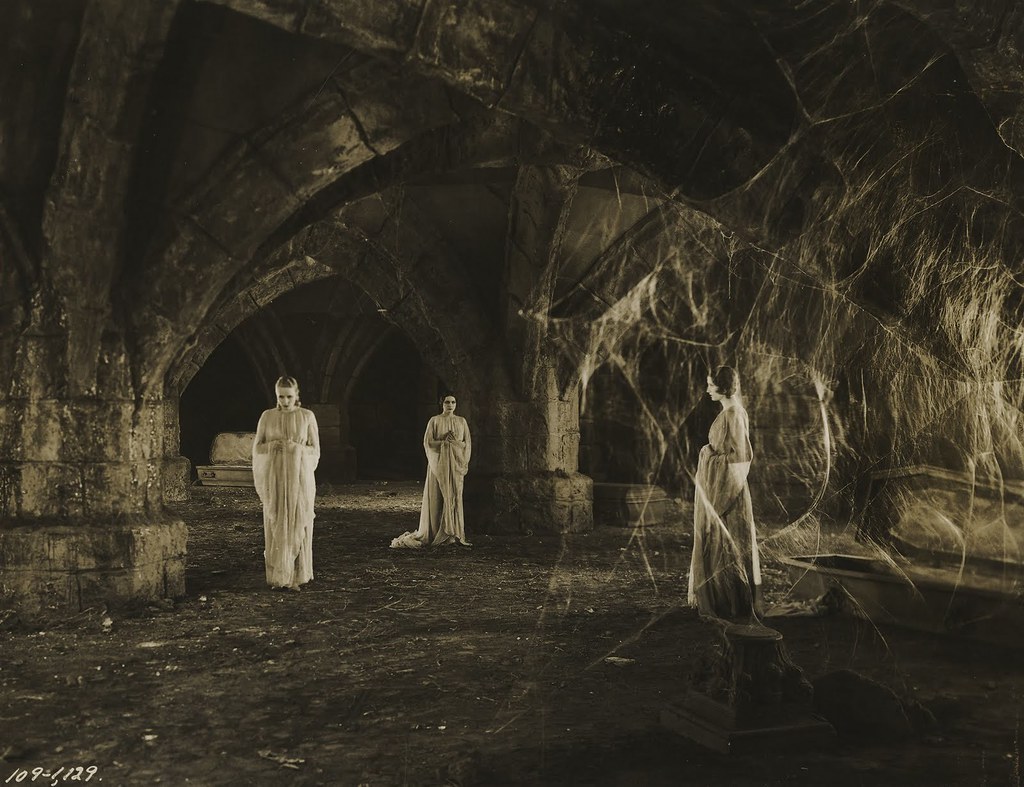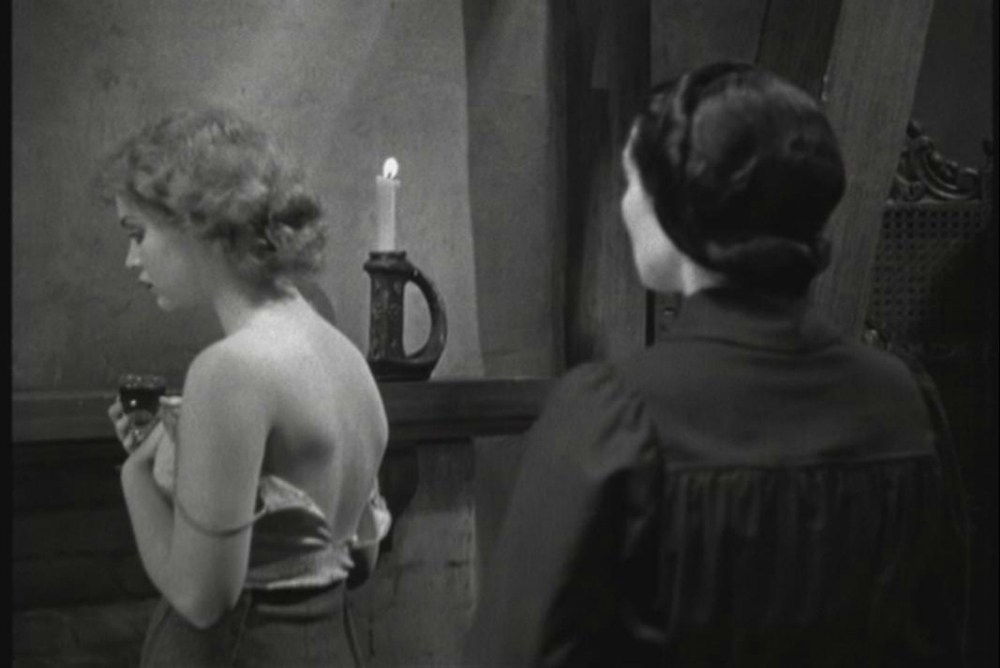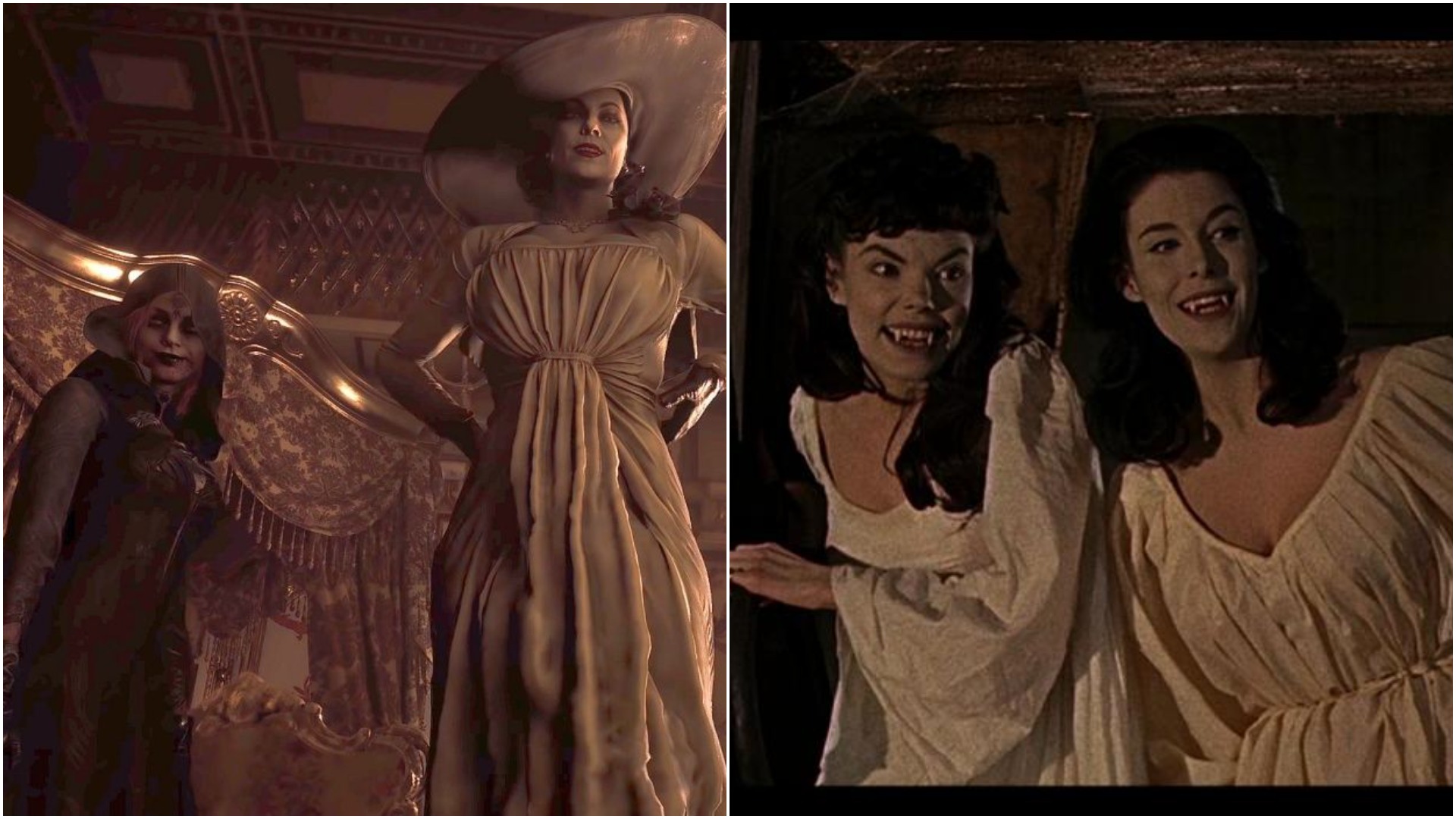While Lady Dimitrescu’s mysterious nature and…umm…proportions quickly made her an internet favorite, some of the most fascinating characters from the Resident Evil Village trailers/demo have to be Lady Dimitrescu’s equally mysterious daughters.
Even using the word “daughters” is potentially misleading. Lady Dimitrescu refers to the characters as her daughters, but aspects of the game’s lore hinted at by circumstantial evidence suggest that they may not actually be her daughters. There’s even a hint that they could somehow be manufactured.
It’s also been noted that the characters share many design similarities with the famous “brides” of Dracula who typically occupy the Count’s castle and have become a core component of the character’s mythology. Of course, those are his brides and not his daughters, so they can’t be an exact parallel to the Village characters, right?
Well, here’s the thing. It turns out that most of what you may “know” about Dracula’s brides could be wrong. In fact, the truth about the characters strongly suggests that they share much more in common with Lady Dimitrescu’s daughters than you may believe.
Let’s go back to the original Dracula novel. You probably know that many liberties have been taken with Bram Stoker’s Dracula novel over the years (due largely to the success of the 1931 film which embedded several changes into the public consciousness), but every now and then, you have to stop and appreciate just how different the original novel is from what we typically think of when we think of the Dracula story.

So how much were the brides changed in the many Dracula films? Well, Dracula’s brides were in the book and, for the most part, they were portrayed similarly to how you’d probably imagine them if you picture them in your head when you think of the various Dracula adaptations in pop culture history. They’re highly sexual, they live in the castle, and they’re vampires who seem to be somewhat subservient to Dracula either because they were turned into vampires by him or they are his actual brides.
What’s interesting, though, is that the Dracula novel never actually references any formal relationship the characters have to Dracula. It’s never explicitly stated that they’re married or that they have some kind of relationship outside of being vampires. In fact, the only time that any such relationship possibilities are referenced is when they’re described as “weird sisters.”
Now, it’s possible that the term sisters is just an example of the colloquialism of the time. Mina calls Lucy her sister at one point in the story, and the vampires call Mina their “sister” after she drinks Dracula’s blood. There’s certainly enough evidence to suggest that the term “sisters” is being used rather casually. That last example even suggests that the trio see themselves as sisters because they were all turned into vampires by Dracula.
Before you entirely disregard the theory that the “brides” are actually sisters, though, consider their original physical descriptions. Two of the brides have dark hair and are specifically described as resembling Dracula. However, the third bride has blonde hair and is treated differently from the other two. She’s addressed by the other brides with a kind of reverence, and her tomb is more elaborate than the others. Even Dracula seems to treat her with more respect.
That dynamic has given rise to the theory that only the blonde vampire is actually Dracula’s bride and that the other two are sisters. In fact, they seem to be the pair’s biological or at least adopted (in a possibly loose use of the term) daughters. While that’s not confirmed anywhere in the book, it’s nevertheless fascinating that there seems to be more of a complicated dynamic at play than the generally accepted idea that these women are just Dracula’s brides.

So how did that dynamic get lost in translation over the years? There doesn’t seem to be an official explanation for the change in the 1931 film, but it was likely due to the content restrictions of the time. The novel implied (but again, never explicitly stated) that there was an incestuous relationship between Dracula and his daughters/brides. The popular theory was that such a relationship was meant to convey how far Dracula and his brood had fallen out of polite society and religion-driven morality. It’s hard to imagine a 1931 horror film diving into that topic, even if it was the pre-code era.
It’s also certainly worth noting that the popular gender dynamics of 1931 probably made it much easier to just describe the women as Dracula’s brides. After all, we’re sure the studio was happy to cast three attractive (and ultimately uncredited) actresses in their film, but it’s not a stretch to suggest that the idea that they’re servants of Dracula or below him on the social ladder would have either been the popular assumption at the time or an idea that was forced upon the writers so that they don’t challenge social standards with some monster flick. For that matter, it’s darkly amusing that there’s a lasting implication that Dracula has “brides” in any kind of sense of the word. Did they get married at night court?
However it happened, the idea of Dracula having brides certainly took root over the years. Everything from Dracula 2000 and The Monster Squad to the criminally underrated Brides of Dracula either directly refers to the women as brides or else fails to present the idea that some of them may be his daughters. Even 1992’s Bram Stoker’s Dracula (which is considered to be one of the most “faithful” major adaptations of the novel) leaves you with the impression that these characters are simply his brides.
So has the idea of Dracula having daughters ever come up on film? There have been a few instances, but the most notable has to be the appropriately named 1936 film, Dracula’s Daughter. That movie was the result of a bidding war/battle over a short story called Dracula’s Guest that was essentially a cut chapter from the Dracula novel. Interestingly, though, it’s believed that the movie is actually based on the famous lesbian vampire story, Carmilla. In fact, Dracula’s Daughter proved to be incredibly controversial due to the implication that the lead character is a lesbian.

That’s what’s so fascinating about the vampire daughters in Resident Evil Village. While many minds jumped to the visuals of Dracula’s brides as soon as they saw the characters, the fact of the matter is that the very implication that those characters are his brides is just that: an implication. It’s a holdover from years of portrayals that either directly supported that idea or otherwise did little to challenge it.
While Dracula’s brides have obviously worked their way into the public consciousness and are memorable characters in their own right, there is something refreshing about the idea that the daughters in Resident Evil Village are invoking the powerful imagery of those characters while allowing them to thrive in an environment that is (according to everything we’ve seen thus far) dominated by women.
After all, everything we’ve seen of Dracula’s “brides” over the years strongly suggests that their badass lionesses who really run the show. It certainly seems Dimitrescu’s daughters honor that legacy.
Subscribe to Den of Geek magazine for FREE right here!
